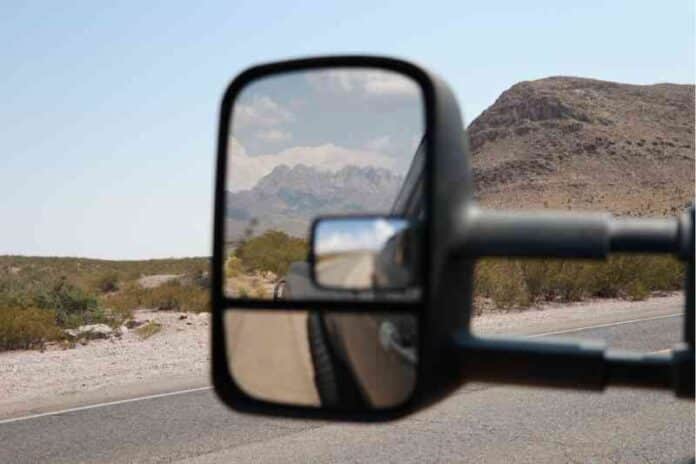
Picture this: you’re cruising down the highway, enjoying the open road, when suddenly your car sputters and grinds to a halt. It’s a scenario no driver wants to experience, but it can happen to anyone at any time.
When your car decides to take an unexpected break in the middle of the road, it’s crucial to stay calm and follow the right steps to ensure your safety and the swift resolution of the issue.
The Tow Dilemma
Breaking down on the road can be a nerve-wracking experience, but the first thing to remember is not to panic. Take a deep breath, turn on your hazard lights, and steer your vehicle to the side of the road if possible. Once you’re safely out of the flow of traffic, it’s time to assess the situation. The question that often arises in this predicament is whether to call for a tow immediately or attempt to troubleshoot the issue.
If you’re not well-versed in car mechanics, it’s usually safer to opt for a tow right away. Calling a professional towing service can save you from potentially exacerbating the problem. When speaking to a towing company, remember to give them all the details: where are you exactly and every other info they ask for. Additionally, familiarize yourself with your insurance policy, as some providers offer roadside assistance that includes towing services.
When waiting for the tow truck, stay inside your vehicle with the doors locked, especially if you’re on a busy road. This is crucial for your safety, as passing traffic can be unpredictable, and your priority is to avoid any unnecessary risks.
DIY Troubleshooting
For those with a bit of automotive know-how, attempting some DIY troubleshooting might be an option before calling for a tow. Start by checking the basics – is there enough fuel in the tank? Are the battery connections secure?
Sometimes, seemingly complex issues have simple solutions. If you’re comfortable doing so, pop the hood and take a look. However, it’s essential to prioritize safety. If you’re on a busy highway or in an unsafe location, it’s wiser to wait for professional assistance.
Another troubleshooting step is to assess the condition of your tires. A flat tire is a common cause of breakdowns, and changing a tire is a skill every driver should possess. Make sure you have a spare tire, a jack, and a lug wrench in your car at all times. If you’re unsure how to change a tire, now is a good time to consult your vehicle’s manual for guidance.
Remember, attempting DIY fixes beyond basic troubleshooting might do more harm than good if you’re not confident in your abilities. If the issue persists after your initial checks, it’s time to call for professional help.
Emergency Kit Essentials
Being prepared for a breakdown can make the experience less stressful. Consider assembling an emergency kit to keep in your car at all times. This kit should include items such as a flashlight, jumper cables, a first aid kit, a blanket, and basic tools. In colder climates, having extra warm clothing, gloves, and a small supply of non-perishable snacks can be invaluable.
Additionally, make sure your mobile phone is fully charged before embarking on any journey. A portable phone charger or power bank is an excellent addition to your emergency kit. In the event of a breakdown, having a charged phone ensures you can easily call for assistance and stay connected.
Regularly check the contents of your emergency kit to ensure everything is in working order and hasn’t expired. Being well-prepared can turn a potentially harrowing situation into a manageable one.
Seeking Professional Help
If your attempts at troubleshooting don’t resolve the issue, or if the problem is beyond your expertise, it’s time to seek professional help. Call for roadside assistance or a tow truck to transport your vehicle to a nearby auto repair shop. Many towing services operate 24/7, ensuring help is available whenever you need it.
While waiting for professional assistance, it’s crucial to stay visible and safe. Keep your hazard lights on, and if you have road flares or reflective triangles in your emergency kit, use them to alert other drivers to your presence. If possible, wait inside your vehicle with the doors locked until help arrives.
When the tow truck arrives, communicate with the driver about the issue you’ve experienced. If you have a preferred auto repair shop, request to be taken there. However, if you’re unsure where to go, the tow truck driver may offer recommendations based on proximity and reputation.
Post-Breakdown Reflections
Once your car is safely in the hands of a professional, take a moment to reflect on the breakdown. Consider what, if anything, could have been done differently to prevent the situation. Did you neglect routine maintenance, such as oil changes or tire rotations? Have you been attentive to warning signs, such as strange noises or dashboard lights?
Use the breakdown as a learning experience to enhance your vehicle maintenance habits. Regular check-ups and prompt attention to any issues can significantly reduce the likelihood of finding yourself stranded on the side of the road.
Long-Term Preventative Measures
In the aftermath of a breakdown, it’s wise to implement long-term preventative measures. Schedule regular maintenance appointments with a qualified mechanic to address any potential issues before they escalate. Keep track of your vehicle’s service history and adhere to recommended maintenance intervals.
Consider joining a roadside assistance program for added peace of mind. Many automobile clubs and insurance providers offer these programs, which often include services such as towing, fuel delivery, and flat tire assistance. Having such a plan can be a cost-effective way to ensure you’re never left stranded without help.
While a breakdown can be a stressful and inconvenient experience, following these guidelines can help you navigate the situation with confidence and safety. Whether it’s opting for a tow, attempting DIY troubleshooting, or being well-prepared with an emergency kit, taking the right steps can turn a breakdown into a manageable inconvenience.
Remember, staying calm and focused is key, and by learning from the experience, you can take proactive measures to prevent future roadside mishaps. Safe travels!






